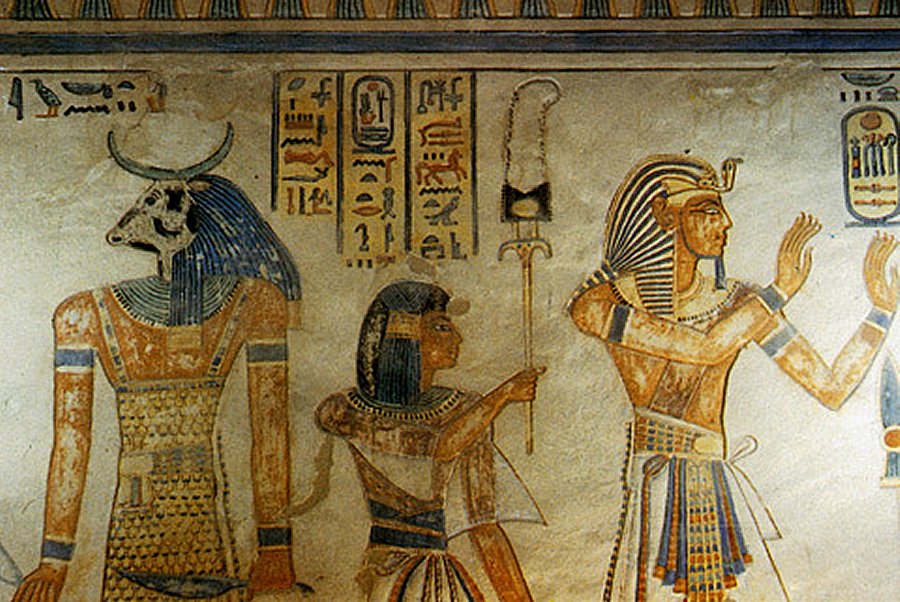Ancient Tombs Of The Nobles In The Valley Of The Queens
A. Sutherland - AncientPages.com - In the Valley of The Queens, tombs were cut into the hills from the 19th Dynasty onwards for the princes, queens, and some royal children of the Ramesside kings, who ruled during an era known as the ‘Ramesside period’.
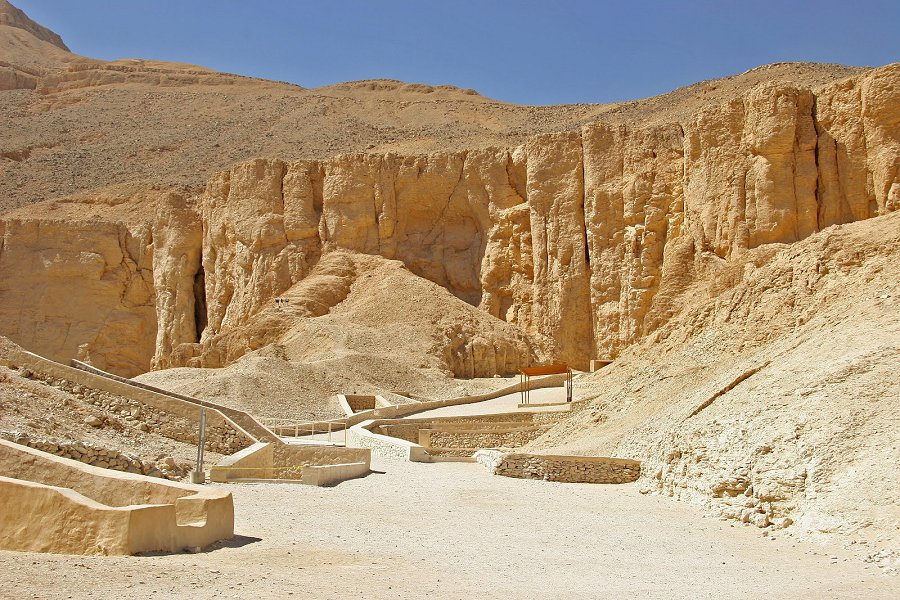
The Valley of the Queens is a small desolate area on the southern edge of the Theban hills but it still has some very beautifully decorated tombs of the nobles of the ancient Egypt
In ancient times, the Valley of the Queens - the second great royal cemetery after the famous Valley of the Kings - was known as Ta-Set-Neferu, meaning –"the place of beauty". It is located about 1.5 miles (2.4 km) west of the mortuary temple of Ramses III (1187–56 BC) at Madinat Habu.
There are about 75 tombs in the valley. They usually consist of a small antechamber followed by a corridor that leads to the burial chamber, but only a few of these tombs were beautifully decorated; most suffered extensive damage from looting, vandalism and flooding..
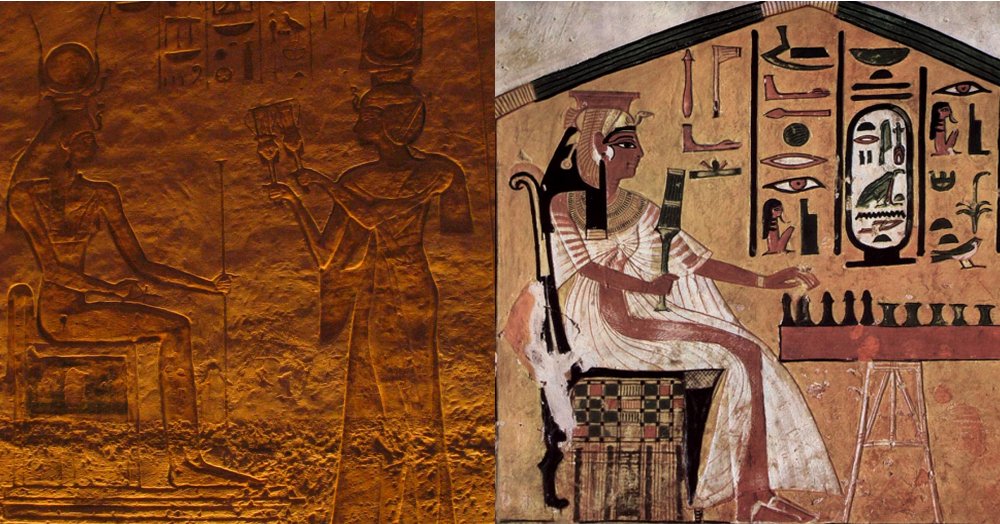
Left: Nefertari depicted offering sistrums to Hathor in her smaller temple of Abu Simbel; Right: Nefertari playing Senet. .Images via Wikipedia
One of the largest and most spectacular tombs in the Valley of the Queens is the resting place carved out of the rock for Queen Nefertari (1290–1224 BC). The tomb - discovered by Ernesto Schiaparelli, an Italian Egyptologist in 1904 - was commissioned by Ramesses II, credited with the building of many temples and monuments including the two rock temples at Abu Simbel.
Nefertari ('beautiful companion') was the first of the Great Royal Wives of Ramesses the Great and one of the best known Egyptian queens, next to Hatshepsut, Cleopatra, and Nefertiti.
Queen Tyti ‘s sarcophagus chamber is another fascinating burial place, located to the south of the Theban Hills. It is designated QV52 in the Valley of the Queens. Tyti (or ‘Thiti) had many titles such as 'King's Daughter', 'King's Sister', King's Wife; King's Mother','Lady of the Two Lands'.
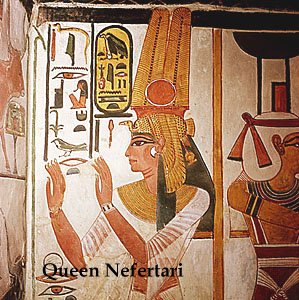 However, her tomb has long been a mystery, because it does not record who she was, or the name of the king with whom she was associated.
However, her tomb has long been a mystery, because it does not record who she was, or the name of the king with whom she was associated.
It has been suggested that she was a wife of Ramesses IIÍ and possibly the mother of Ramesses IV.
On the tomb’s walls, there are depictions of Tyti as a young girl and as a middle-aged lady.
He is also shown before Thoth and the four sons of Horus guard the burial chamber.
Among other paintings, there is one depicting Tyti in the company of gods and goddesses.
She shakes an ancient Egyptian object - sistrum - before Horus, ("Heru" - 'the distant one'), one of the most important ancient Egyptian deities, worshiped from at least the late prehistoric Egypt until the Ptolemaic Kingdom and Roman Egypt.
Her burial chamber has jackal and baboon paintings.
Yet another tomb – discovered in the Valley of Queens in 1903 and completely looted - belonged to Amenhirkhopshef, a crown prince, a son of Ramesses III, who died when he was only a young child; in his tomb, the wall paintings are well-preserved.
Written by – A. Sutherland AncientPages.com Staff Writer
Copyright © AncientPages.com All rights reserved. This material may not be published, broadcast, rewritten or redistributed in whole or part without the express written permission of AncientPages.com
More From Ancient Pages
-
 Why Did Ancient Romans Cut Off Their Thumbs?
Ancient History Facts | Mar 2, 2020
Why Did Ancient Romans Cut Off Their Thumbs?
Ancient History Facts | Mar 2, 2020 -
 King Lud – Mysterious Founder Of London And His Connection To The Tuatha De Danann
Featured Stories | Oct 21, 2021
King Lud – Mysterious Founder Of London And His Connection To The Tuatha De Danann
Featured Stories | Oct 21, 2021 -
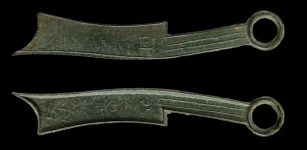 Scientists Decipher 2,300-Year-Old Chemistry Formulas Revealing Ancient Metallurgy Was More Complex Than Previosuly Thought
Ancient Technology | Aug 10, 2022
Scientists Decipher 2,300-Year-Old Chemistry Formulas Revealing Ancient Metallurgy Was More Complex Than Previosuly Thought
Ancient Technology | Aug 10, 2022 -
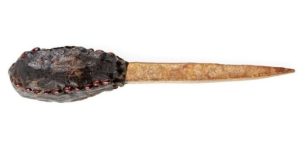 Tomography And Radiocarbon Dating Used To Examine Australian Aboriginal Knife
Archaeology | Jul 3, 2023
Tomography And Radiocarbon Dating Used To Examine Australian Aboriginal Knife
Archaeology | Jul 3, 2023 -
 Kalaripayattu – 3,000-Year-Old Indian Martial Art From Which Kung Fu And Karate Emerged
Ancient History Facts | Sep 6, 2020
Kalaripayattu – 3,000-Year-Old Indian Martial Art From Which Kung Fu And Karate Emerged
Ancient History Facts | Sep 6, 2020 -
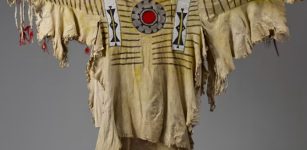 Historic Event – Exeter Museum Returns Ceremonial Dress Of Famous Chief Crowfoot To Canada’s Siksika People
Artifacts | May 20, 2022
Historic Event – Exeter Museum Returns Ceremonial Dress Of Famous Chief Crowfoot To Canada’s Siksika People
Artifacts | May 20, 2022 -
 Interaction Between Homo Sapiens And Neanderthals Studied Using New Radiocarbon 3.0 Method
Archaeology | Feb 15, 2023
Interaction Between Homo Sapiens And Neanderthals Studied Using New Radiocarbon 3.0 Method
Archaeology | Feb 15, 2023 -
 Early Humans Were Probably Driven To Extinction By Climate Change- Study Suggests
Civilizations | Oct 15, 2020
Early Humans Were Probably Driven To Extinction By Climate Change- Study Suggests
Civilizations | Oct 15, 2020 -
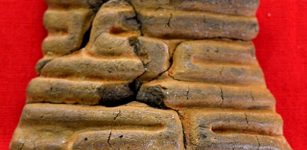 3,000-Year-Old Piece Of Pottery Unearthed On Okinawa Island, Japan
Archaeology | Feb 21, 2017
3,000-Year-Old Piece Of Pottery Unearthed On Okinawa Island, Japan
Archaeology | Feb 21, 2017 -
 Michelangelo’s Hidden Secrets Under The Medici Chapel
Featured Stories | Jul 16, 2019
Michelangelo’s Hidden Secrets Under The Medici Chapel
Featured Stories | Jul 16, 2019 -
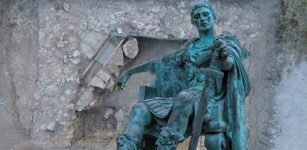 Major Discovery Of Ancient Roman Temple – Largest Evidence Ever Of The Imperial Cult
Archaeology | Jan 5, 2024
Major Discovery Of Ancient Roman Temple – Largest Evidence Ever Of The Imperial Cult
Archaeology | Jan 5, 2024 -
 Mysterious And Unexplained Encounter With Unusual Tiny Beings In Italy – A Strange Connection – Part 2
Featured Stories | Jan 18, 2022
Mysterious And Unexplained Encounter With Unusual Tiny Beings In Italy – A Strange Connection – Part 2
Featured Stories | Jan 18, 2022 -
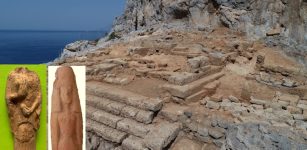 Secrets Of The Ancient Temple Of Dimitra At The Acropolis Of Falasarna Revealed By Archaeologists
Archaeology | Nov 19, 2022
Secrets Of The Ancient Temple Of Dimitra At The Acropolis Of Falasarna Revealed By Archaeologists
Archaeology | Nov 19, 2022 -
 How The Horseshoe Became A Symbol Of Good Luck
Ancient Idioms & Superstitions | Jan 28, 2017
How The Horseshoe Became A Symbol Of Good Luck
Ancient Idioms & Superstitions | Jan 28, 2017 -
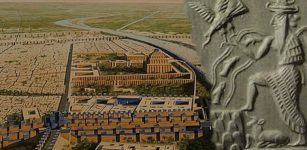 Eridu: Pre-Flood City That Belonged To Enki, God Of Creation, Intelligence, Wisdom And Magic
Civilizations | Mar 27, 2017
Eridu: Pre-Flood City That Belonged To Enki, God Of Creation, Intelligence, Wisdom And Magic
Civilizations | Mar 27, 2017 -
 New Evidence Of Human Habitation At Panga ya Saidi Cave, Kenya That Dates Back 78,000 Years
Archaeology | May 11, 2018
New Evidence Of Human Habitation At Panga ya Saidi Cave, Kenya That Dates Back 78,000 Years
Archaeology | May 11, 2018 -
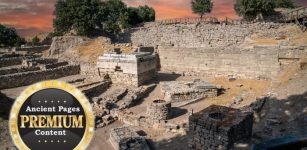 Mystery Of The Large Ancient Boulders In Ireland And Britain – Possible Connection To The City Of Troy?
Featured Stories | Oct 17, 2023
Mystery Of The Large Ancient Boulders In Ireland And Britain – Possible Connection To The City Of Troy?
Featured Stories | Oct 17, 2023 -
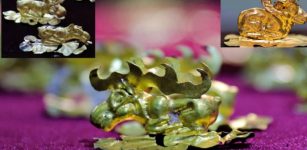 Gold Dated To Scythian-Saka Era Unearthed In Valley Of The Kings In East Kazakhstan
Archaeology | Sep 14, 2020
Gold Dated To Scythian-Saka Era Unearthed In Valley Of The Kings In East Kazakhstan
Archaeology | Sep 14, 2020 -
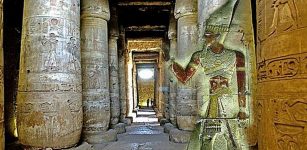 Abydos: One Of The Most Important Cities Of Ancient Egypt
Civilizations | Jul 15, 2016
Abydos: One Of The Most Important Cities Of Ancient Egypt
Civilizations | Jul 15, 2016 -
 Rio Tinto Bosses Quit Over Destruction Of One Of The Earliest Aboriginal Sites
News | Sep 12, 2020
Rio Tinto Bosses Quit Over Destruction Of One Of The Earliest Aboriginal Sites
News | Sep 12, 2020

